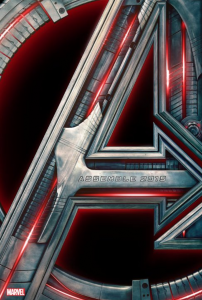
 In Avengers: Age of Ultron, an arrogant Tony Stark (Robert Downey, Jr.) and a supportive Bruce Banner (Mark Ruffalo) accidentally create a “murder-bot” named Ultron powered by artificial intelligence. Once “alive” it poses the question whether the world is better off without the Avengers? Ultron’s mission is to terminate them and in the process all of us as well. After watching the two plus hours of Age of Ultron, I came away asking a similar question: Is it time for comic book movies to take a break?
In Avengers: Age of Ultron, an arrogant Tony Stark (Robert Downey, Jr.) and a supportive Bruce Banner (Mark Ruffalo) accidentally create a “murder-bot” named Ultron powered by artificial intelligence. Once “alive” it poses the question whether the world is better off without the Avengers? Ultron’s mission is to terminate them and in the process all of us as well. After watching the two plus hours of Age of Ultron, I came away asking a similar question: Is it time for comic book movies to take a break?
Buildings crumble, people flee from the wreckage of their mangled vehicles, super heroes leap from place to place leaving behind detritus—scattered fragments and rubbish, that says we’ve been here and kicked much butt. Afterwards, however, somebody’s got to clean up all that mess. Just imagine living in the Marvel Cinematic Universe—every year or so, a catastrophe larger than 9/11 befalls a poor unsuspecting populace. And in Age of Ultron, the ante-pushing sequel to the monster 2012 hit, several cities sustain massive collateral damage. After the second wave of multination, I began to turn off.
Sure, there is fun to be had here, as the heroes kid around with one another against the backdrop of mass destruction and mayhem. We don’t see the twisted bodies and chaos that litter the broken streets. In-jokes, of course, abound, while a romance between the big green guy and the frosty Black Widow (Scarlett Johansson) blossoms. New characters are constantly introduced. There is even a homespun subplot involving Hawkeye (Jeremy Renner). But this attempt to inject a moment of repose lands with a boring “thud.” It is leaden, forced and contrived. But no matter, in mere moments, the heroes will be a world away back at it destroying a city in the process of trying to take down Tony Stark’s latest abominable robotic creation. The moral: don’t live in an urban center.
Age of Ultron is directed by Joss Whedon, who directed and co-wrote the wildly popular and critically praised 2012 predecessor. It is safe to say that this follow-up is not nearly as successful as the one that came before it. And instead of getting smarter and narrowing the focus, the story goes wider to the point of becoming unwieldy. A lot is going on and no one story gets enough development to be taken seriously. The Marvel Cinematic Universe is quickly becoming as dense as Game of Thrones, and this exposes the inherent advantage that episodic television has over its theatrical counterpart. As I pointed out last week, Netflix’ Daredevil may be the future of the comic book adaptation, where the narrative get’s time to breathe. Here the action slows down just enough to give us Hawkeye’s story, and there are hints about the others’ origins in odd flashback dream sequences induced by new character the Scarlet Witch (Elizabeth Olsen). Unlike the last X-Men film, Quicksilver (here played by Aaron Taylor-Johnson) is not nearly as fun and jusy comes off cold.
But in a movie this big it is hard not to find something to like. James Spader is an excellent choice for the voice of the scary Ultron. And one new character, The Vision, is pretty remarkable. Whedon balances things well doing the best that could be hoped for as the Marvel requirements are met. Age of Ultron is the necessary bridge to the films that are to follow. One hopes that the films to come will be more responsible as the cities available to destroy are beginning to dwindle.
My complaints aside, most viewers will find the busy story-line exciting enough to hold their attention. I saw Age of Ultron in IMAX 3D, which added little given the fact that the film was not shot in IMAX and was post-converted to 3D. My advice is to see it in 2D. And if you’re planning to visit the Marvel Cinematic Universe, even for a little while, avoid any crowded metropolitan area, because that’s where the Avengers ply their trade.
